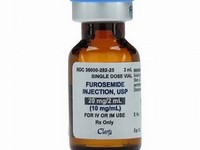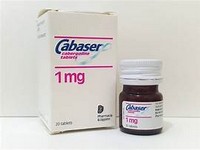Furosemide

Furosemide
CLINICAL USE
Loop diuretic
DOSE IN NORMAL RENAL FUNCTION
Oral: 20 mg – 1 g dailyIV: 20 mg – 1.5 g dailyDoses titrated to response
PHARMACOKINETICS
Molecular weight :330.7 %Protein binding :91–99 %Excreted unchanged in urine : 80–90 Volume of distribution (L/kg) :0.07–0.2half-life – normal/ESRD (hrs) :0.5–2/9.7 DOSE IN RENAL IMPAIRMENT
GFR (mL/MIN)
20 to 50 : Dose as in normal renal function 10 to 20 : Dose as in normal renal function; increased doses may be required <10 : Dose as in normal renal function; increased doses may be required DOSE IN PATIENTS UNDERGOING RENAL REPLACEMENT THERAPIES
CAPD :Not dialysed. Dose as in GFR <10 mL/min HD :Not dialysed. Dose as in GFR <10 mL/minHDF/high flux :Not dialysed. Dose as in GFR <10 mL/minCAV/VVHD :Not dialysed. Dose as in GFR=10–20 mL/min IMPORTANT DRUG INTERACTIONS
Potentially hazardous interactions with other drugsAnalgesics: increased risk of nephrotoxicity with NSAIDs; antagonism of diuretic effect with NSAIDsAnti-arrhythmics: risk of cardiac toxicity with anti-arrhythmics if hypokalaemia occurs; effects of lidocaine and mexiletine antagonisedAntibacterials: increased risk of ototoxicity with aminoglycosides, polymyxins and vancomycin; avoid concomitant use with lymecyclineAntidepressants: increased risk of hypokalaemia with reboxetine; enhanced hypotensive effect with MAOIs; increased risk of postural hypotension with tricyclicsAnti-epileptics: increased risk of hyponatraemia with carbamazepine Antifungals: increased risk of hypokalaemia with amphotericinAntihypertensives: enhanced hypotensive effect; increased risk of first dose hypotensive effect with alpha-blockers; increased risk of ventricular arrhythmias with sotalol if hypokalaemia occursAntipsychotics: increased risk of ventricular arrhythmias with amisulpiride, sertindole or pimozide (avoid with pimozide) if hypokalaemia occurs; enhanced hypotensive effect with phenothiazinesAtomoxetine: hypokalaemia increases risk of ventricular arrhythmiasCardiac glycosides: increased toxicity if hypokalaemia occursCiclosporin: variable reports of increased nephrotoxicity, ototoxicity and hepatotoxicity Lithium: risk of toxicity ADMINISTRATION
Reconstition
– Route
IV peripherally or centrally, IM, oral Rate of Administration
1 hour; not greater than 4 mg/minute Comments
250 mg to 50 mL sodium chloride 0.9% or undiluted via CRIP Increased danger of ototoxicity and nephrotoxicity if infused at faster rate than approximately 4 mg/minute Protect from light Furosemide (frusemide).FUrosEMidE (FrUsEMidE) 339 OTHER INFORMATION
500 mg orally ≡ 250 mg IVExcreted by tubular secretion, therefore in severe renal impairment (GFR 5-10 mL/min) higher doses may be required due to a reduction in the number of functioning nephronsFurosemide acts within 1 hour of oral administration, (after IV peak effect within 30 minutes) diuresis complete within 6 hours.
See how to identify renal failure stages according to GFR calculation
See how to diagnose irreversible renal disease
Home









